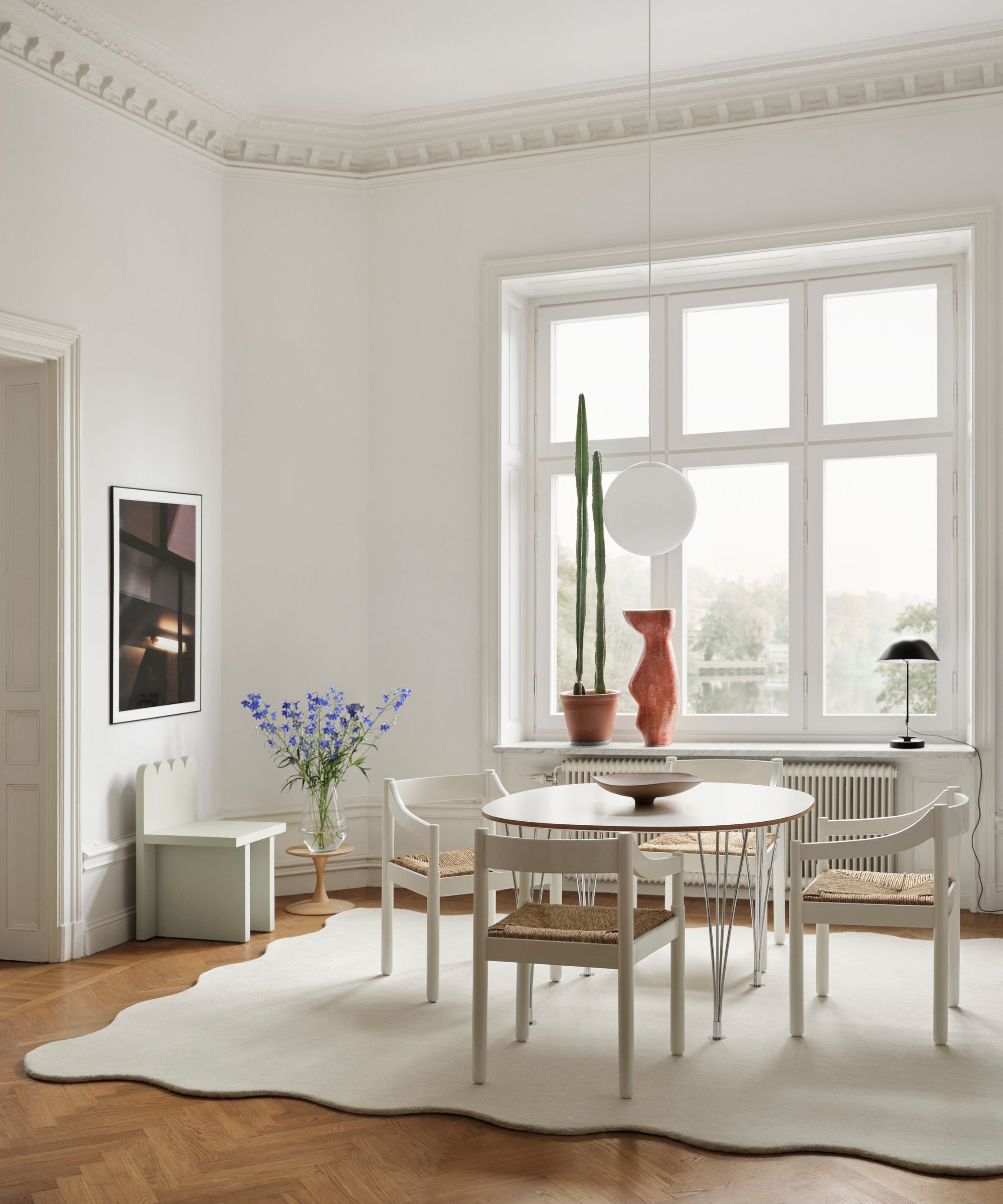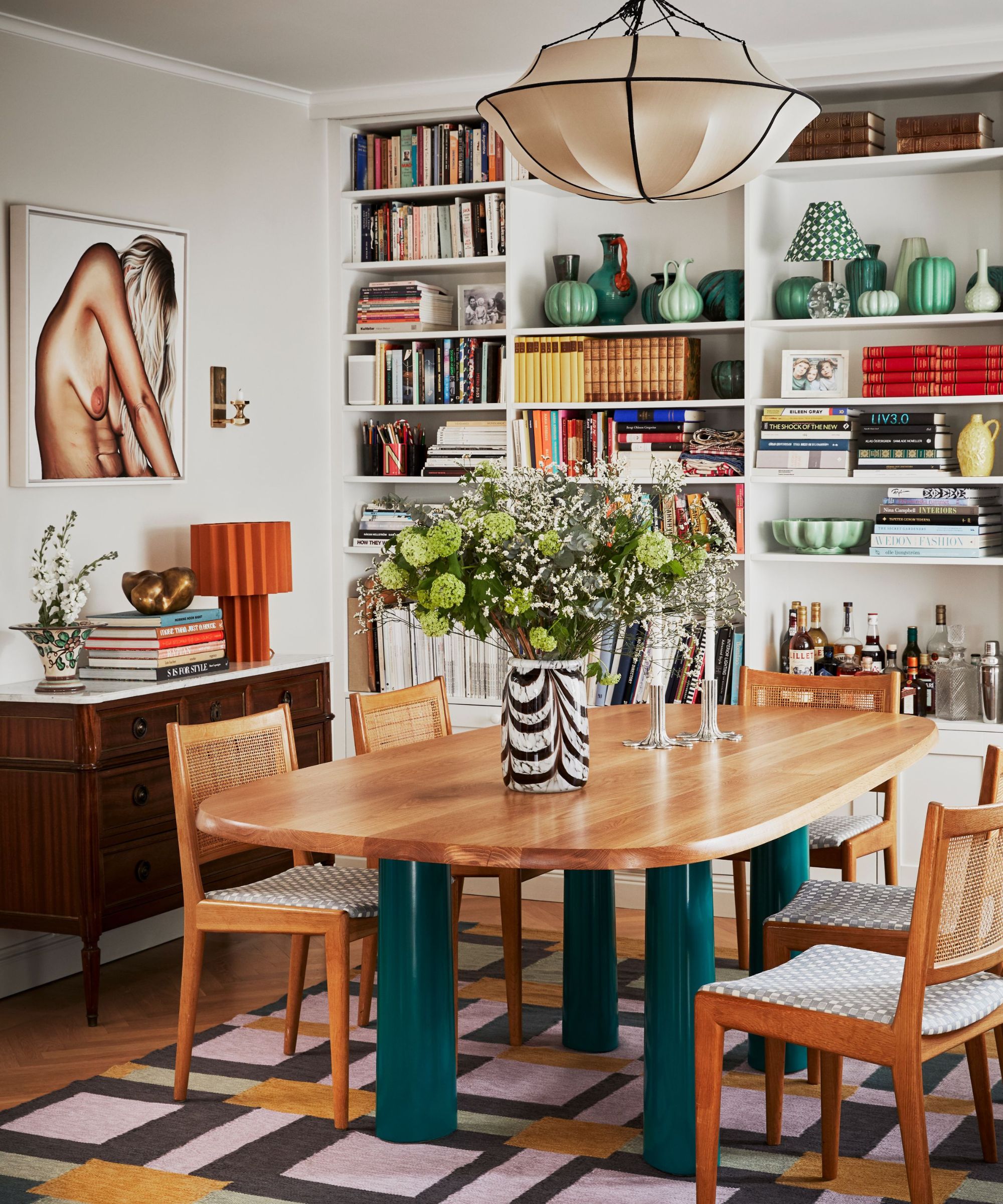Modern European style is the laid-back aesthetic we all want to achieve – here designers tell us how it's done
Modern European style is the perfect middle ground between traditional charm and contemporary design


Interior design influences come from different aesthetics and locations, but modern European style is proving a popular, and enduring, reference for how we decorate our homes.
You're probably quite familiar with Europe's more traditional interior design styles, but this year, it's a more modern take on these design aesthetics that are taking center stage, beloved for their neutrality and sleek lines paired with pops of color and charming features.
Whether you're renovating an original home on the continent or simply want to infuse key design elements into your scheme, here's everything you need to know about modern European style, and how interior designers suggest decorating with it.
What is Modern European style?

Europe is a large continent filled with countries that all have their own unique interior design styles, so it can be tricky to know exactly what modern European style includes. Laetitia Laurent, principal and founder at Laure Nell Interiors, describes it as a 'design that feels classic and timeless. The interior is paired down, clean, and streamlined, mixed in with elements that feel traveled and collected.'
It's about striking a balance between traditional charm and more modern features, essentially mixing old and new in a more intentional and stylized way. 'Modern European interior style is characterized by a blend of contemporary design elements with traditional European influences. It often features clean lines, minimalism, and a focus on functionality and comfort,' says Katy Davis, of Urbanology Designs.
'A modern European interior feels layered, collected over time – as if it's always been there. Filled with timeless furnishings that speak to its residents, modern European homes tell a story often missing from newly constructed homes today,' adds Lauren Sullivan, of Well by Design.
What are the key design elements of modern European style?

As with all styles, there are certain colors, materials, and decorating approaches that are key to modern European style and defines it from the more traditional spaces Europe is renowned for.
Design expertise in your inbox – from inspiring decorating ideas and beautiful celebrity homes to practical gardening advice and shopping round-ups.
The color palette associated with modern European interiors makes it a versatile style whether you prefer decorating with neutrals or more vibrant hues. 'Neutral color palettes such as whites, grays, and earth tones are commonly used, with occasional pops of color for contrast,' explains Katy.
The more vibrant colors associated with the style are what make it a versatile aesthetic that appeals to several tastes. 'The base palette is neutral – creamy whites and wood tones, overlaid with rich jewel tones such as chartreuse, royal blue, and ruby red,' adds Laetitia.

There is also an emphasis on using natural materials throughout the home and creating a space that feels lived in. 'Natural materials are used as often as possible and will only patina and become better with time – imperfections are to be embraced,' says Lauren, adding 'honest materials such as plaster, oak wood, marble, limestone, and terracotta make up the space. Applied moldings and even the tiniest of millwork details are key.'
The decor is where the materials that offer a sense of coziness and luxury are introduced. When decorating your space, Lauren suggests introducing fabrics such as 'tweed, linen, silk, velvet, mohair, and leather that feel luxurious yet approachable – a tenant of modern European design.'
How to decorate with modern European style
1. Decorate with neutral colors and bold accents

When decorating with modern European style, there are layers to the color palette. The base of your home should be neutral – a space that feels light and paired-back gives you the foundations to build up to more saturated hues and visually interesting decor.
'Shades of white, cream, beige, and gray are foundational colors that create a clean and airy feel. These neutrals serve as a backdrop for the rest of the design elements,' explains Katy. But this doesn't mean these spaces are void of color. 'While the overall palette is neutral, modern European interiors may incorporate bold accent colors like deep blue, emerald green, mustard yellow, or rich burgundy,' she explains.
If you gravitate towards paired-back colors rather than these bolder accents, earthy tones work beautifully in this style of interior. 'Soft earth tones such as taupe, terracotta, olive green, and sandy browns add warmth and a connection to nature,' she adds, explaining that these colors are often used in furnishings, textiles, and accent pieces.
2. Introduce plenty of natural materials

In tune with the nature-inspired hues used in modern European style, the materials also tend to be more natural, maintaining a balance between clean lines and more decorative details. All of the materials used work together to create the aesthetic this design style is known for.
'Modern European interior style evokes elegance, sophistication, and understated luxury. The clean lines and minimalistic but still decorative approach creates a sense of place and belonging, promoting a rich and tranquil ambiance,' explains Katy, adding that 'natural materials like wood, stone, and metal are prevalent, add warmth and texture to the space.'
In this Parisian home, wood paneling has been used in the living room to create a visual divide, while a stone fireplace becomes to focal point in the room. Pairing these natural materials with the more decadent details of the decor epitomizes modern European style.
3. Choose simple furniture

Modern European style features clean lines, simple forms, and a more contemporary aesthetic when it comes to furniture pieces. Whether it's a dining table, sofa, or coffee and side tables, stick to items that feel unfussy and more modern in style.
'For it to feel modern, the main furniture such as the upholstery pieces and case goods should be fairly simple and clean lines. To that, I would add texture such as velvet or silk to give the overall environment interest,' explains Laetitia.
Consider a neutral sofa in a classic, simplistic shape spruced up with velvet cushions in rich tones or a timeless wooden dining table with a design-focused centerpiece. Essentially, the larger investment pieces should feel simple and classic, while the decor adds color and charm.
4. Mix pieces from different European countries

Europe consists of lots of countries, so for modern European style to feel authentic, introducing elements of design elements and decor that are core to different European countries is key. This could be color, materials, furniture, or decor.
'Earth tones are ever present, but so are playful patterns, tapestries, and spaces saturated with color. I love mixing French, Italian, English, and Scandinavian furnishings from different periods for a well-collected interior with a storied past,' says Lauren.
Having this mix of style and eras through your decor ensures your space feels influenced by European design rather than an imitation, especially if you're introducing the style into a home that isn't in Europe.
5. Display collected art and decor

In the year of eclectic, collected, lived-in interiors being at the forefront of interior design trends (or anti-trends), decorating with art, trinkets, and wall hangings collected overtime is a great way to infuse character and European charm into your home.
'You can introduce modern European style by adding a few art pieces and accessories. Anything you have collected during travels that could be displayed on an otherwise contemporary shelf to add character to the space,' suggests Laetitia.
Whether you create a gallery wall of your favorite pieces, follow the rule of three when decorating a shelf, or simply mix in a few collected items amongst more modern pieces, it's a great way to add a personal touch to your space.
Modern European style is all about keeping a simple, neutral base and adding character with decor and texture. 'Overall, modern European interior style embodies a harmonious balance between sophistication, functionality, storytelling and an unexpected eclectic moment here and there,' says Katy.
This design style favors clean lines and natural elements – it's about striking a balance between refined elegance and lived-in style. For Laetitia, Modern European style can be defined as 'a space that is calming, clean and open and yet filled with interesting artifacts, like a swanky bar that has lived many lives.'

I’ve worked in the interiors magazine industry for the past five years and joined Homes & Gardens at the beginning of 2024 as the Kitchens & Bathrooms editor. While I love every part of interior design, kitchens and bathrooms are some of the most exciting to design, conceptualize, and write about. There are so many trends, materials, colors, and playful decor elements to explore and experiment with.